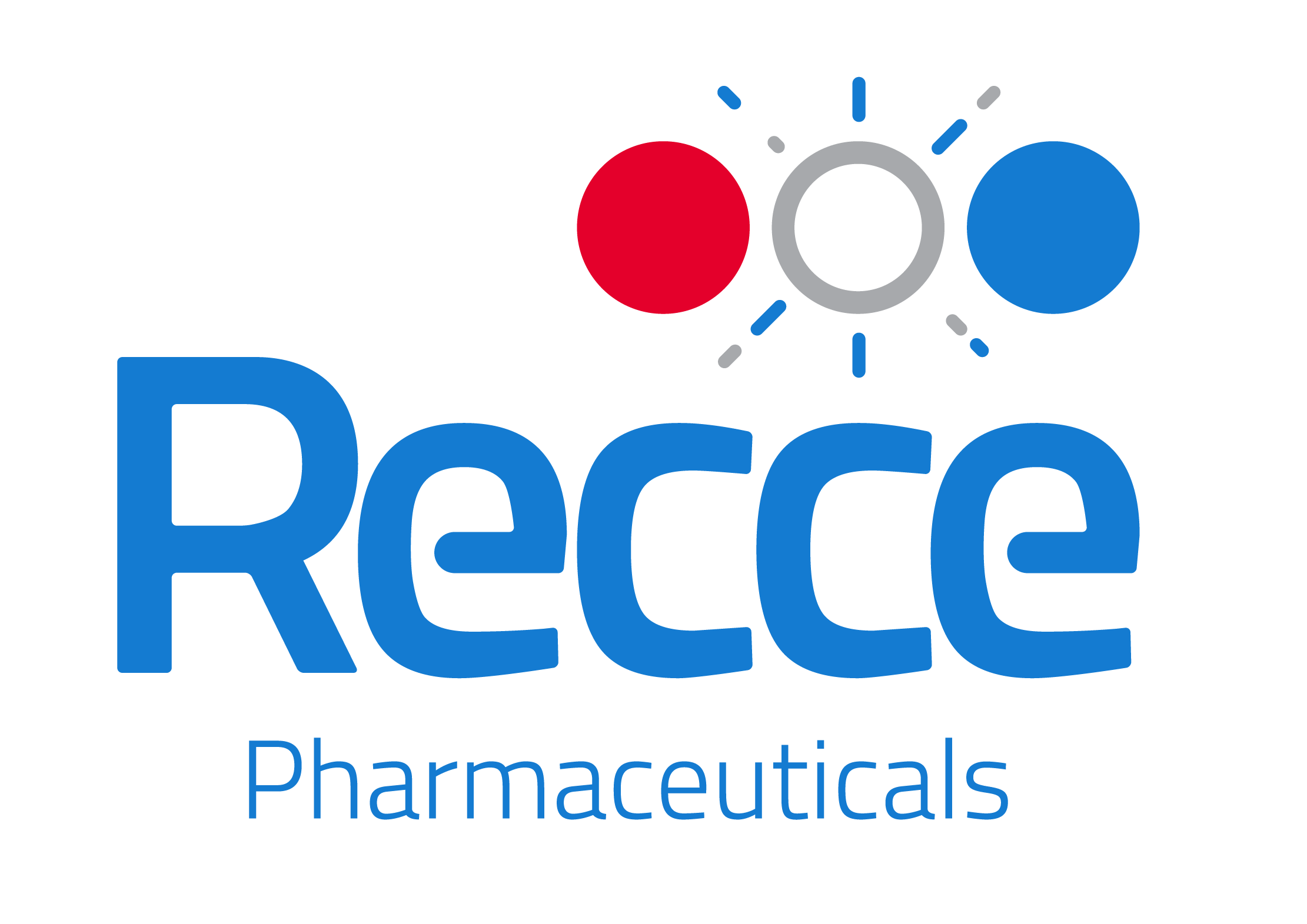Transcripts are auto-generated and may contain errors
Kathleen Vollman: [00:00:00] I’ll get on my soapbox for a little bit here and say vital signs are vital for a reason. The registered nurse should be taking that skill back because there is more to assess than the numbers on the vital
Nicole Kupchik: signs. This is the sepsis spectrum, a podcast about antimicrobial resistance, sepsis, and how to expect the unexpected in your practice.
Maya 17 is rushed into the emergency department by her mom. Just after midnight, her temperature’s dropping heart rate, climbing, increasing lethargy. The team hooks up the monitor and starts taking a history. But one question cuts through the noise when we can’t seem to answer, and it’s chipping away at us.
Is it an infection? Is it sepsis? What could the source be as a symptoms blur? The clock keeps ticking. [00:01:00] Time won’t wait for us. If we miss the early signs, treatment lags behind. And if resistance is in the mix, let’s just say the margin for error disappears. I. From superbugs to subtle signs, early recognition isn’t just clinical best practice.
It’s how we save lives, and it’s one of our best tools to push back against antimicrobial resistance. I.
Hi everyone, and welcome to the sepsis spectrum or as we like to call this season Microbial Mysteries. I’m Nicole Kubic, critical care nurse, clinical nurse specialist, and your guide through the. Complicated and sometimes frustrating world of sepsis and antimicrobial resistance. Today I’m joined by a very good friend and true leader in critical care nursing, someone who’s helped shape how hospitals tackle sepsis, infection, and antimicrobial resistance.
Kathleen [00:02:00] Vollman is a nationally recognized clinical nurse, specialist, educator and consultant. She’s trained frontline teams across the country advise the American Hospital Association and championed early sepsis recognition at every level of care. Kathleen currently serves as the president of the World Federation of Critical Care Nursing and is the founder of Advancing Nursing, where she’s building stronger systems and smarter bedside practice.
Let’s get started with today’s guest, Kathleen Vollman. I.
I am so excited. I am here today with Kathleen Vollman, who is a fellow clinical nurse specialist, but also a disclosure for both of us. We are both. Truly believe in science and supporting sepsis programs in hospitals. So welcome, Kathleen. Oh, and thanks for inviting me, Nicole. This is gonna [00:03:00] be a lot of fun and learning as well.
- I hope so. So you and I both are clinical nurse specialists and we both have led sepsis programs and hospitals. And so I kind of wanna kick it off just talking about where we are now with hospitals where post pandemic, and I think a lot of hospitals had to do some major regrouping after the pandemic and redirect a lot of programs.
And so I just wanna kind of get your take because you do a lot of consulting across the country and even internationally and just. At, like at your pulse on where you feel hospitals are now with sepsis and sepsis programs?
Kathleen Vollman: Well, I, I’ll be honest with you, considering I started this journey in 2004 when the first bundles came out, that, uh, we’re in a much better place in the fact that, uh, with the CDCs programmatic, um, document that came out and with the government support of [00:04:00] through, um, quality.
And value-based purchasing. It has really propelled organizations to, uh, see that sepsis is a significant, uh, problem in their organization. It’s usually the highest rate for mortality for the patients in the organization, and it’s also a, a significant 19 20% readmission rate. And so they’re looking at it from a, a patient.
Perspective, but also a financial perspective. So I think it’s, it, the bar has been raised significantly.
Nicole Kupchik: Oh, I, I absolutely feel the same. ’cause I, I mean, let’s be honest, before the first official bundle in early goal directed therapy was published, I think a lot of hospitals didn’t have anything formal.
No, there was,
Kathleen Vollman: um. There wasn’t, everybody believed they knew how to manage sepsis. And both of you and I ran into this, and it was the same with acute myocardial [00:05:00] infarction. Um, prior to, uh, the, the. Impetus to improve door to balloon. Um, there were system challenges between cardiology and emergency rooms and it resulted in delays in care.
So, um, we’ve learned from that through a MI and stroke, and we need to put sepsis on that same trajectory of its sepsis until it’s ruled out otherwise.
Nicole Kupchik: Yeah, and I think, you know, one of the challenges, and I always say this, is that, you know, we just don’t have the 12 lead in troponin, right? For sepsis, like we do myocardial infarction.
And so let’s say you’re consulting with a hospital, and let’s say they don’t have anything formal. What advice are you giving to hospitals who are starting a journey in formalizing a sepsis program?
Kathleen Vollman: Well, one, they need to get a multidisciplinary group together, uh, ed, physician [00:06:00] champion, um, as well as an ED nurse champion.
They need to do the same in the ICU, um, hospitalist, uh, uh, lead pharmacist lab. Um, and they then need to, um, identify. Where they wanna start. And usually because most of the sepsis is identified or come in through the emergency room, that’s where I usually recommend that they start. And a, in building, uh, screening programs in the emergency room in triage, I also recommend, and this is fortified by the, um, the CDC document to, uh, hire a sepsis coordinator.
That runs the program. This is a big program. It needs somebody that owns it and it also needs an executive sponsor at the C-suite level. Uh, so that any barriers [00:07:00] that they run into, any turf wars, any, anything that happens, they can use that executive sponsor to be able to push through. Uh. The, whatever challenges they’re experiencing.
Nicole Kupchik: I think that’s actually really good advice for hospitals and sepsis coordinators is to make sure you’ve got that direct connection with leadership.
Kathleen Vollman: Yeah, and I was excited to see that that was also in the CDC, um, because that was something that from a consultant perspective, I always made that made sure that connection existed.
And then really in triage, um. Having early recognition signs of sepsis where they’re doing a screen, an actual screen, um, where they’re asking questions, you know, have you sought healthcare in the last two weeks? Um, you know, is your mom. Making sense to you. Uh, you [00:08:00] know, uh, vital signs, oxygen sat, do they have a fever?
And if, and if they, you know, have a cough, there’s things that they can begin to recognize and they put that together in a screening document. And if it’s su suspicious enough that in my perfect world, ’cause that’s where I live and I work really hard to get everybody else to hang out, in my perfect world, it would launch a protocol.
And that protocol would allow labs drawn and other processes, blood cultures in that to move forward with the recognition management and treatment.
Nicole Kupchik: Yeah, absolutely. You know, and I think one of the things that we’ve discussed in another episode that people don’t necessarily think about is, you know, we, we always associate fever with infection, but truly, you know, when you’re in working in triage, a low temperature Oh yeah.
It’s can be ju. It’s not even more profound, I think some than a fever. It is.
Kathleen Vollman: It is. Because [00:09:00] that’s basically your body saying, I have used up that inflammatory response and I can’t mount it anymore. Yeah, and so both sides, same with low white count. You know, the high white count says those guys are out there launched, fighting the very low white count.
Either means they’re massively immunosuppressed because of whatever disease they have, or they’ve used everything
Nicole Kupchik: up. Yeah. And I think that’s just something we don’t always cue into, you know, too. Yeah. Yeah. Absolutely.
Kathleen Vollman: Well, and one of the things I also teach nurses, um, two things about tachypnea, unexplained tachypnea.
Really needs to be viewed as a medical emergency because the body’s blowing off acid. If you can’t explain it, if that’s not something that they routinely do because of their COPD or something like that. So, and it’s similar to an unexplained hypotension,
Nicole Kupchik: I. Can we back her up and [00:10:00] we sure can talk about just something basic as the respiratory rate is extremely predictive of deterioration.
Absolutely. And I always say, what’s the problem in hospitals? How do we measure the
Kathleen Vollman: respiratory rate? Woman I. Oh, it’s 16 or 18 a minute on every single patient. The accuracy of it is, is massively challenging. And I, you know, I’ll get on my soapbox for a little bit here and say vital signs are vital for a reason.
The registered nurse should be taking that skill back because there is more to assess than the numbers on the vital sides there. There’s the way somebody is breathing. The speed of it, the feel of their skin, you know, whether they’re sweating. Um, there’s so many things that you pick up during that interaction.
Nicole Kupchik: Yeah. Well and you know, it’s, it’s very rare that you’re gonna have a patient who’s septic, who’s breathing 16, 16, 18 16. They’re [00:11:00] often breathing in the twenties and sometimes thirties or higher. ’cause they’re
Kathleen Vollman: blowing off that acid. Yeah. That’s their emergency way of trying to correct what’s physiologically or pathophysiologically going on in
Nicole Kupchik: their body.
All right, so we’ve already met two main objectives I wanna hit on today. Just that a low temperature can be, is a warning sign. Yeah. But also how important the respiratory rate is.
Kathleen Vollman: Yeah.
Nicole Kupchik: Okay. All right. Now, let’s say you’re, you’re consulting with a hospital as a clinical nurse specialist, and they, they’re really trying to do the right thing, so they, they’re implementing their bundles, 30 mils per kg of fluid.
They’re getting antibiotics on board. So let’s chat about antibiotic recommendation as and antibiotic grams. What do you recommend to hospitals from a programmatic standpoint regarding antibiotics?
Kathleen Vollman: Well, as part of that committee work, um, they need to get the ID doc, the infection preventionist ed docs and ICU docs together in a room [00:12:00] to take a look at what.
Bugs are in the community that are routinely coming into that environment and what bugs are in the hospital for. Hospital acquired and pick, um, initial antibiotics. And interesting enough, I don’t know if you’re aware of this study, it came outta, um, university of Michigan. They’ve got a big, uh. Consortium process going on with the state of Michigan.
And they’re sort of like the coordinating center. Um, so they’re publishing a lot of research on the 60 or so hospitals that are participating in this. And um, well, I’m gonna ask you what, what antibiotic broad spectrum do they usually give pte? Zo Zo, exactly. Yeah. Um, so they did this, so there was a Zo shortage.
And they captured data on, uh, 7,500 [00:13:00] patients, even groups, um, where Zosyn, and then the shortage happened. So they gave, uh, if I’m gonna say this correctly, C Cefapime Yeah. Cfa. Mm-hmm. And both groups had gotten Vancomycin as well. Because of whatever’s going on in those communities. Um, interesting enough, when they compared these and they match the populations 5% higher mortality rate in the Zosyn group, really, because it’s knocking out.
Some normal stuff that needs
Nicole Kupchik: to stay probably in the gut. Wow. And so was that an observational study? Like do you think they’ll do a randomized control trial or
Kathleen Vollman: It would be, it would be fascinating to do it. Um, it was a retrospective analysis of Oh, okay. Their data and they matched the groups and did the correct, um, statistical analysis to it.
But it’s, so there’s a [00:14:00] couple of things around. Getting the right antibiotic. One is what you talked about, you know, what you mentioned in terms of a programmatic perspective to identify, because the speed at which we give the antibiotic in is important and the data has shown. Um, but you don’t wanna just arbitrarily toss the antibiotic bucket at people because you have antimicrobial resistance.
Strategizing, the initial type of antibiotic in the septic patient is important. The other component is managing the, the accuracy of your blood cultures and also appropriateness of urine cultures because in the data, 20 to 20 to 50% of the inappropriate antibiotics in a hospital are based on.
Inappropriate [00:15:00] urine cultures interesting because they’re running it off the WBCs and nitrates.
[music]: Mm-hmm.
Kathleen Vollman: In the urine and not connecting it to signs and symptoms with the patient.
Nicole Kupchik: Oh, so they were just reflexively giving antibiotics when really the patient likely didn’t need them.
Kathleen Vollman: They did a UA that went to a reflex culture.
Yeah, the culture came up. It was not connected to symptoms, but they gave the antibiotic because the culture was positive.
Nicole Kupchik: And from your perspective, what are hospitals doing now? Are they just doing blood cultures or are they doing like blood plus a urine if they have UTI symptoms or a sputum if they’re having respiratory symptoms?
Yeah. I, I would
Kathleen Vollman: hope, um, there’s still a lot of pan culturing. Um, the pan turing happens, I think more in-house. And it happens in the ed. I think the ED is a little more specific based on the symptoms. Um, but from a programmatic perspective, [00:16:00] how we manage blood cultures and reducing contamination of blood cultures by how we draw ’em, um, and putting very specific criteria for when an appropriate urine culture.
When it’s appropriate to order a urine culture. In other words, having the provider mark what are the signs and symptoms this patient is experiencing, um, in order to get accuracy in those urine cultures. So we use our EHR and build that as part of the programmatic development.
Nicole Kupchik: And then what do you recommend hospitals do if they are seeing a trend in contaminated blood cultures?
Kathleen Vollman: Well, there’s recommendation that one, we reduce the number of people that are drawing them so that you can control the process, variation that you do, good skin and, uh, anti sepsis that you have, um, [00:17:00] the, the. Write material present, um, and it’s set up the correct way. Um, so in my perfect world, that usually is helped by a kit that has all the necessary activity in there.
And then the science that really has, um, come out in pushing down, um, the contamination rates is ensuring you’ve got some type of diversion device. So that there is a passive way to remove the skin, plug skin colonization, bugs, so that when I’m getting the blood culture, I’m getting the true blood and more
Nicole Kupchik: accurate.
Oh, interesting. And do you feel like that has become. General practice across the country or how do you feel? Well, we
Kathleen Vollman: went, it’s improving because we went from a standard by the lab group of 3%, tolerating 3%. Um, contamination blood [00:18:00] cultures down to 1%.
Nicole Kupchik: Oh, okay. So you’re definitely trying to get this to where it’s almost, it’s a very rare event that’s happening.
’cause
Kathleen Vollman: because again, contaminated blood cultures, one can either delay appropriate therapy or somebody could start inappropriate therapy or they don’t know when to stop it. And, um, so, ’cause there’s a wait period. For the blood cultures, and so those antibiotics are on during that time. Now another strategy hospitals are doing, adding to this journey is the use of procalcitonin for deescalation.
Nicole Kupchik: Well, you know what I would love? I would love to, let’s go to break and then when we come back, why don’t we chat about the bundle. I. And chat about how we a number one, make sure we’ve got the right antibiotics that we’re not contributing to antimicrobial resistance, and how do we deescalate antibiotics?[00:19:00]
Are you a nurse infection, preventionist, or healthcare professional who wants to stay ahead of the curve? Visit sepsis podcast.org to learn how you can receive free nursing CE credits by listening to or watching the sepsis spectrum. It’s our way of supporting you and together better understanding the ever evolving world of sepsis care and a MR.
And now back to the show.
So Kathleen, let’s talk a little bit more about the bundles that we’re all using. So we’re getting labs, we’re giving 30 mils per kg of fluid, and then if the BMI is 30 or higher, we can use ideal or predicted body weight to dose fluid. And we’re starting. Ideally appropriate antibiotics, but if not broad spectrum and then quickly narrowing and that
Kathleen Vollman: narrowing is really important and that often happens in the ICU [00:20:00] or
Nicole Kupchik: on the med-surg environment.
I mean, we could do a whole episode on phenotyping bugs and how do we find the source of infection? Like that could be its own episode, but let’s chat about the bundle. Let’s, let’s first talk about fluid. So 30 mils per kg. What are you seeing happening across the country? So first of all, let’s talk about fluid choice.
So, um, on
Kathleen Vollman: fluid Choice, I’m excited to see it shifting that the research data that’s come out over probably the last seven years, I think it’s been in the various studies, have, have really shown to us, um, at a couple meta-analysis as well. That balance solution is superior in sepsis resuscitation, and in most resuscitation other than in neurologic, I believe is one and trauma.
Nicole Kupchik: Yeah. And just so for listeners who aren’t aware, but when we say balanced fluid, we’re talking like lactated, ringers, plasma, i, a normosol. So things that are more physiologically [00:21:00] clo, like similar to your own blood and plasma. Um, yeah. So, and that, that’s what where the literature is right now and there is an open meta-analysis that’s gonna stay open.
And as studies are published that meet the criteria, it’s gonna be updated, which is super exciting. Which is
Kathleen Vollman: awesome and, but it was exciting to see, so both you and I were at our national, uh, critical care conference, the National Teaching Institute in New Orleans, and it was great to see in the various presentations.
And yours was one of ’em, you know, the number of people that raised their hand that the resuscitation is taking place with balanced solutions. So, um, that was faster uptake than I thought it would be.
Nicole Kupchik: Yeah. Well, and for those of you who aren’t aware that. One of the big concerns is the chloride in saline leading to kidney injury and other complications.
Um, all right, let’s chat. Okay, so we’re, we’re moving toward balanced fluid now. What about reassessment of fluid? Like, what trends are you seeing across the [00:22:00] country with reassessment of like, you’ve got somebody who’s hypotensive, do we give more fluid or do we start a pressor? Like where are you seeing that happening?
Kathleen Vollman: Well, before we, I, I wanna back up, if you don’t mind just for a second. There is still hesitation that I. I saw out there in audiences and talking with nurses, uh, about, uh, uh, renal failure patients and congestive heart failure patients not getting that full 30 ml per kilogram. And there is very good data out of Northern California Kaiser showing that when they are resuscitated appropriately.
With that 30 ml, you may not give it as fast, but it’s still within that three hours that they have better outcomes, and that has been reproduced in the State of Michigan work as well. So in other words, doesn’t matter what your comorbidities are, they should get that fluid.
Nicole Kupchik: Well, it’s interesting you say that.
I know I just, in doing root cause analysis on patients who die within 24 hours [00:23:00] of presentation who are septic, it was often we would find a renal patient who’s got CKD or a heart failure patient, or even both who was under resuscitated.
Kathleen Vollman: Yep, exactly. And so the data’s there and we need to pay attention to that and push to have that resuscitation.
Then once we get, um. Pass that initial fluid bolus. Usually vasopressors if the patient remains hypotensive, but then at a point if the hypotension remains, that there needs to be precision assessment. I. Of whether somebody responds to fluid or not using some type of dynamic assessment. Um, most of the time, what I’m seeing now, I mean the uptake is greater using passive leg raise with a dynamic assessment of stroke volume.
Now, I will tell you and I want to correct anybody who is doing a passive leg with blood pressure. Oh yeah,
Nicole Kupchik: it doesn’t [00:24:00] work. Yeah. Well, blood pressure is just a very static measurement, you know? And, and I don’t know if a lot of people know that, like when you do a non-invasive blood pressure, it doesn’t, it’s not measuring systo and diastole.
It’s measuring a mean, and then it uses a reverse calculation to give you a systolic and diastolic number. It’s, it’s, I’m always surprised at how many people don’t know that.
Kathleen Vollman: Well, I’m surprised at how many people believe that number versus an art line that works accurately with a good square wave. Now that could be a whole episode.
That’s a whole nother yes. That that could be something on its own. We’re gonna do 20 episodes just of our own topics. Yeah. Using non-invasive or invasive, depending on if your patient’s mechanically ventilated and has an art line or if they don’t, um. Then using non-invasive mechanisms to be able to identify patient fluid responsiveness.
And usually it’s a stroke volume change of greater than 10% demonstrates that they’re likely fluid [00:25:00] responsive and therefore I would tend to move towards giving fluid, uh, more than raising my vasoactive.
Nicole Kupchik: Well, and what’s interesting is in one of the randomized control trials that was published, they showed that they were able to decrease mechanical vent rates by half.
When they used a, a stroke volume measure, and by the way, CRRT, they didn’t have to do. Ah, well, and they cut that. That was significant reduction know in the need for dialysis. I think it was ICU length of stay was cut by three days when they use a stroke volume measure.
[music]: Yeah. And
Nicole Kupchik: it’s just interesting and I just don’t understand why we’re still using blood pressure and heart rate to guide fluid.
Kathleen Vollman: Well and literally, uh, I think you and I. Tossed this out a number of times. Are you gonna guess it or assess it? Yeah. Because all the other stuff is guessing heart rate and blood pressure. Yeah, heart rate and blood pressure A or even CVP because that’s a [00:26:00] static measurement. Those are guessing it versus truly assessing the patient’s response.
And if the world is talking about precision medicine,
Nicole Kupchik: that is precision medicine. Using a stroke volume change with the passive leg race test. Yeah, yeah, yeah. So yeah. And for those of you who aren’t familiar with the passive leg race test, do you mind just explaining it, Kathleen? Sure.
Kathleen Vollman: So basically, um, it’s, it’s.
The easiest way to describe it, it’s a physiologic bolus. So basically you start with the patient in a 45 degree. You let their body equilibrate, you take your measure, and then you put ’em down and you passively, you don’t let them participate at all because that will mess with your reading and you lift the legs up and that gives you roughly, is it about 300?
Yeah. It depends on the patient’s height. [00:27:00] 300.
Nicole Kupchik: Yeah. Yeah. About a, using their own blood. Right. About a 300 mil bolus toward back toward the heart.
Kathleen Vollman: And so one of the reasons why passive leg raise is, um, a more appropriate choice versus giving a bolus is because we don’t want extra fluid on board if they don’t need the fluid.
Yeah. Rather have their own fluid. Serve as a measure for assessing.
Nicole Kupchik: Yeah. And well, and you can just really, like you said, use precision medicine and guide fluid. ’cause you know, it’s, it’s not uncommon to see patients getting, you know, five to 10 liters of fluid in the first 24 hours of presentation. When you use a stroke volume assessment, you’re given a lot less fluid.
And
Kathleen Vollman: ultimately I, I mean we used to live in the world of flood and we’ll take it off later.
Nicole Kupchik: Yeah.
Kathleen Vollman: And we know that is detrimental. Um, there is increase in morbidity and mortality related to that. [00:28:00] So we need to follow the science and, um, as a result, when we do, when we recognize them early, provide the right.
Measurements, assessments and fluid and vasopressors and appropriate reassessment, which is basically doing the bundle. The mortality rate is significantly lower, and that was measured in, in, in the CMS data that was published in Chest by Sean
Nicole Kupchik: Townsend. Yeah. All right. Let’s jump now to antibiotics. So you mentioned procalcitonin earlier.
’cause again, a big concern we have with patients is antimicrobial resistance. So can you talk about, all right, so you use antibiotic grams. That’s one of the things when as a consultant you’re seeing hospitals recommend. Yeah. Yeah. Mm-hmm. So can you talk a little bit about, okay, let’s say you’ve got somebody who’s on antibiotics.
Like do they have to run a full 10, seven to 10 [00:29:00] to sometimes 14 day course, or can that look a little different?
Kathleen Vollman: Well, it can look a little different if you do the procalcitonin test to evaluate whether you need the full course or if, if the patient resolves fairly quickly, oftentimes 48, 72 hours, they’re drawing it to c If there is a possibility to be able to, um, get them off or.
Is something
Nicole Kupchik: not working. So can we talk through what this would look like in a practical standpoint? So would the emergency department get a procalcitonin level as a baseline, or what does that look like? Interesting enough, that
Kathleen Vollman: data that I’ve read, that procal, even though everybody draws it. It. The research is not there to identify somebody in sepsis because sepsis can be caused by a bacterial, a viral, or a fungal.
So that’s really [00:30:00] where the technology and innovation is moving to because what, what I see now and what I’ve seen in the research literature is procalcitonin and CRP are drawn. Both of those don’t have strong areas under the curve for somebody who just has an infection. Or even like a viral or fungal or bacteria, viral or fungal or bacterial.
They, okay. They don’t have ar a good area under the curve. Um, for identifying. Oh, for identification, okay. Yeah, for the early identification part. So you’re looking at blood draws, um, uh. MDW monocyte distribution with, um, abnormality has been it. So most of, most of the, um, they’re either blood, the monocyte, the WBC or gene expression that is telling us that.
The, the patient is in [00:31:00] igniting in an abnormal response to a virus, a bacteria, or a fungal. So it’s not very, it’s not specific to a bacterial, which is important because we don’t know what it is when the patient first comes in. Um, I will tell you on all three of the ones that are there, the MDW, the uh.
It’s Incept and immuno express. They all have negative predictive value of a 0.97. That’s pretty amazing. So the ability to rule it out is very strong with all of those. Okay. The positive predictive value is not as high. It’s in the high sevens or the low eights 0.8. Um, but the negative predictive value is how I would use those tools to say, okay, I know it’s not that.
Nicole Kupchik: Yeah. [00:32:00] Well, which would be super helpful, right? Would be very helpful. Yeah. ’cause if you’re, if you can avoid exposing a patient to antibiotics or antifungal antiviral drugs, that would, again, long you think, ’cause you’ve gotta think longevity in our population.
Kathleen Vollman: Well, and the whole consequence of the amount of antibiotics and the antibiotic resistance in the environment, uh, the impact on the patient of c diff, the resistant microorganisms, that form because of the amount of antibiotics that we use.
Um, there’s new bugs, resistive bugs that are coming up. All the time.
Nicole Kupchik: Okay, so let’s circle back to, ’cause I kind of wanna close it out with, so how do we use procalcitonin to deescalate antibiotics?
Kathleen Vollman: So my understanding how, how I see the practice working is they may do it three days in and then seven days in, you know, the usual antibiotic time.
But don’t quote [00:33:00] me on that because, um. I usually leave that up to the providers.
Nicole Kupchik: Sure. Well, and I’ve seen a lot of variability. Have you? Okay. Yeah, like, like one hospital I worked at, we did it every other day. And then I’ve consulted with hospitals that are doing an approach to what you’re explaining.
Kathleen Vollman: Yeah. So I don’t, I don’t know if we have the exact, which is why you’re probably seeing the variability. I just know it needs to be part of the equation. On the backside, not as much on the front side. That’s my personal.
Nicole Kupchik: Yeah. And then so we would use procalcitonin so that when the level gets to normal, like then what?
Kathleen Vollman: Take the antibiotics
Nicole Kupchik: off. Yeah. So if, yeah, if it seems, if it’s appropriate, yeah. Okay. Yeah. Which again, will help right in the long run.
Kathleen Vollman: Well, and, um, I, I believe I just read, uh, a study, uh, was it New England Journal or JAMA that they were able to show that [00:34:00] for a central line I. Bloodstream infection, you only had to run it for seven days.
You didn’t have to run it for the 12. So it’s important for that science to then get into practice so that we can manage the environment, whether it’s hospital acquired sepsis or it’s community acquired sepsis.
Nicole Kupchik: Yeah. ’cause if you think about, especially antimicrobial resistance in some of our. Especially our chronic patients, you know, we wanna minimize exposure if it’s not appropriate in that patient population.
You know, so that down the line, we’re not dealing with a MR. Right. Well, I just wanna thank you for joining me today. You’re always so much fun to talk to. I always love just, just chatting with you and just seeing like what you’re up to and what the latest, greatest is out there. Well,
Kathleen Vollman: thanks for inviting me for this.
Nicole Kupchik: Absolutely.
It is always so fun to get to chat with your friends and you know, I’ve known Kathleen Vollman for years and [00:35:00] she’s just an amazing clinical nurse specialist who really gets from a system perspective how to move the needle and really implement programs so that they matter and make a difference. And you know, of course it always is just so important when you’re trying to.
Implement something from a system level to get all the right people involved, especially those at the bedside who are actually doing the work. So I just wanna thank you for joining me on today’s episode of the Sepsis Spectrum. If you like the show, we wanna hear about it. Please leave a review wherever you’re enjoying the podcast.
It really helps a ton. You can also reach me in our awesome team@infoatsepsis.org or visit sepsis podcast.org to share any stories of your own questions. Concerns or any episode ideas you may have To learn more about Sepsis Alliance, visit sepsis.org. The sepsis spectrum is brought to you by Sepsis Alliance.
I’m your host, Nicole kic. Our executive producers are Alison Strickland, Hannah sas. Claudia Orth and [00:36:00] Alex Colvin. Our producers are Aaron Corny, Rob Goldman s Shahnti Brooke, and me Nicole kic. Our post-production producer is Tim Scott. Our editor and engineer is Jason Portizo, and our music is by Omer Ben-Zvi.
To learn about Sepsis Alliance’s podcast, legal disclaimer and compliance policies, you can visit sepsis podcast. Dot org slash disclaimers. The sepsis spectrum is a human content and sepsis alliance production.
Thanks for watching. I hope you’re enjoying the sepsis spectrum. Leave a comment below and let me know if you want to binge some more episodes. Just click that playlist right over there and if you’re feeling super generous today, give this video a like, subscribe if you haven’t hit the bell. All the things.
And of course you can also listen on the go wherever you get your podcast. [00:37:00] Bye.































